A Weekend in Rabat and Casablanca, Morocco
A Weekend in Rabat and Casablanca, Morocco
This past weekend the majority of the Global kids traveled to Morocco. Six went to Marrakech, and my three friends and I went to Rabat. Marrakech is definitely the tourist hub of the country, especially compared to the unassuming capital city that is Rabat, but we were sold on Rabat by the $52 round trip flight through Ryanair. While in Rabat, we took a day trip to Casablanca that proved eventful. One of my classmates described her trip to Marrakech as having “highs that were really high, and lows that were really low,” and this perfectly sums up our trip to Rabat. Continue on to read about our highs and lows.
The Highs
Our Riad
By far the best part of our stay in Rabat was our AirBnb, or riad. A riad is a large traditional house built around a central courtyard, often converted into a guest house. We pulled up to the riad late Thursday night after our flight got in around 9 pm, and we glanced around, skeptical. But when we entered the riad, our breaths were taken away. The beautiful home as a large patio spanning two floors where we took our meals, a kitchen and sitting area with squat cushions on the floor, numerous bedrooms, and a multi-tiered terrace that looked out on the city, the ocean, and the mosque next door. It was without a doubt the best AirBnb I have ever had the pleasure of staying in.
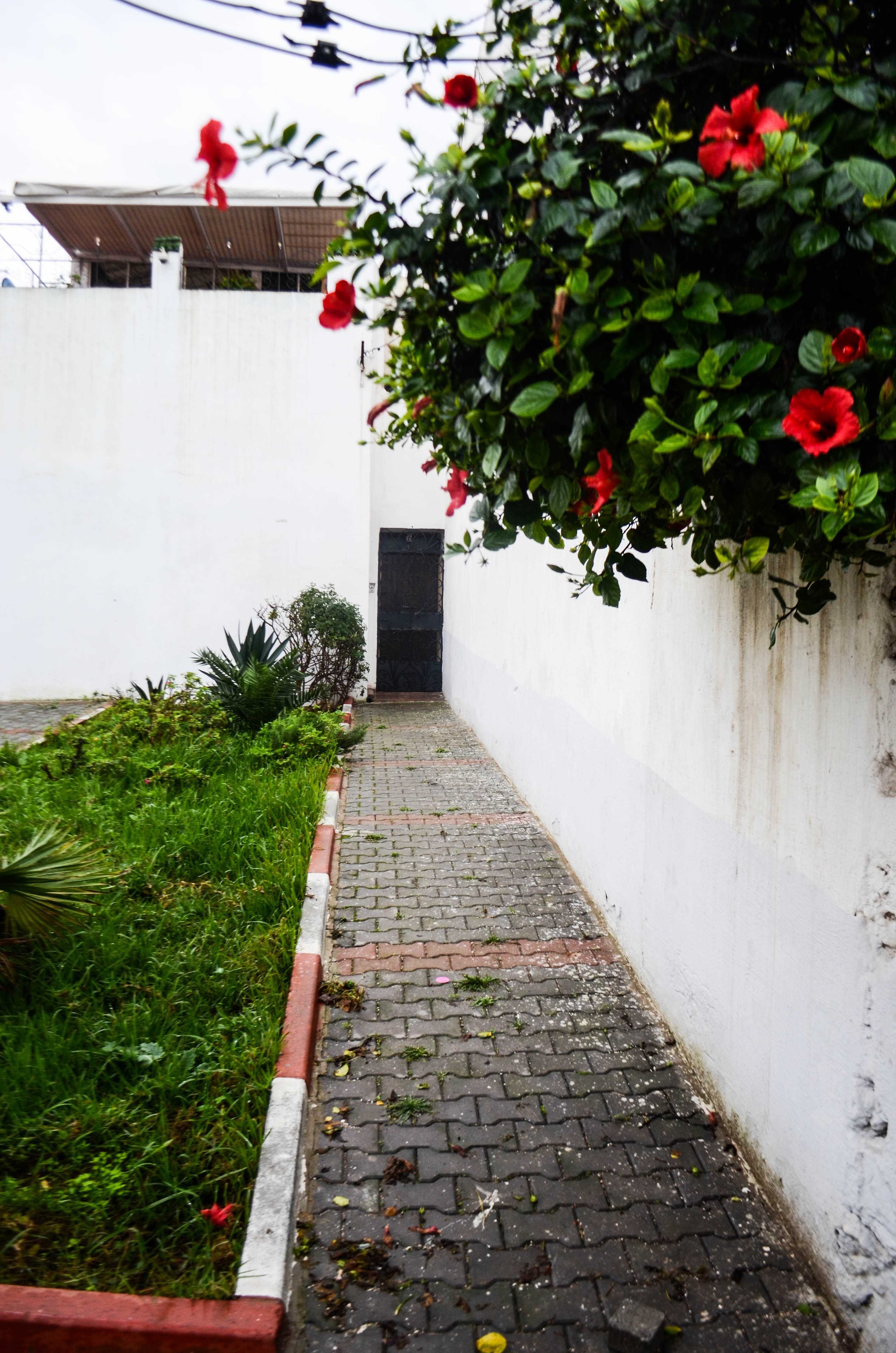
The walkway leading to our riad.
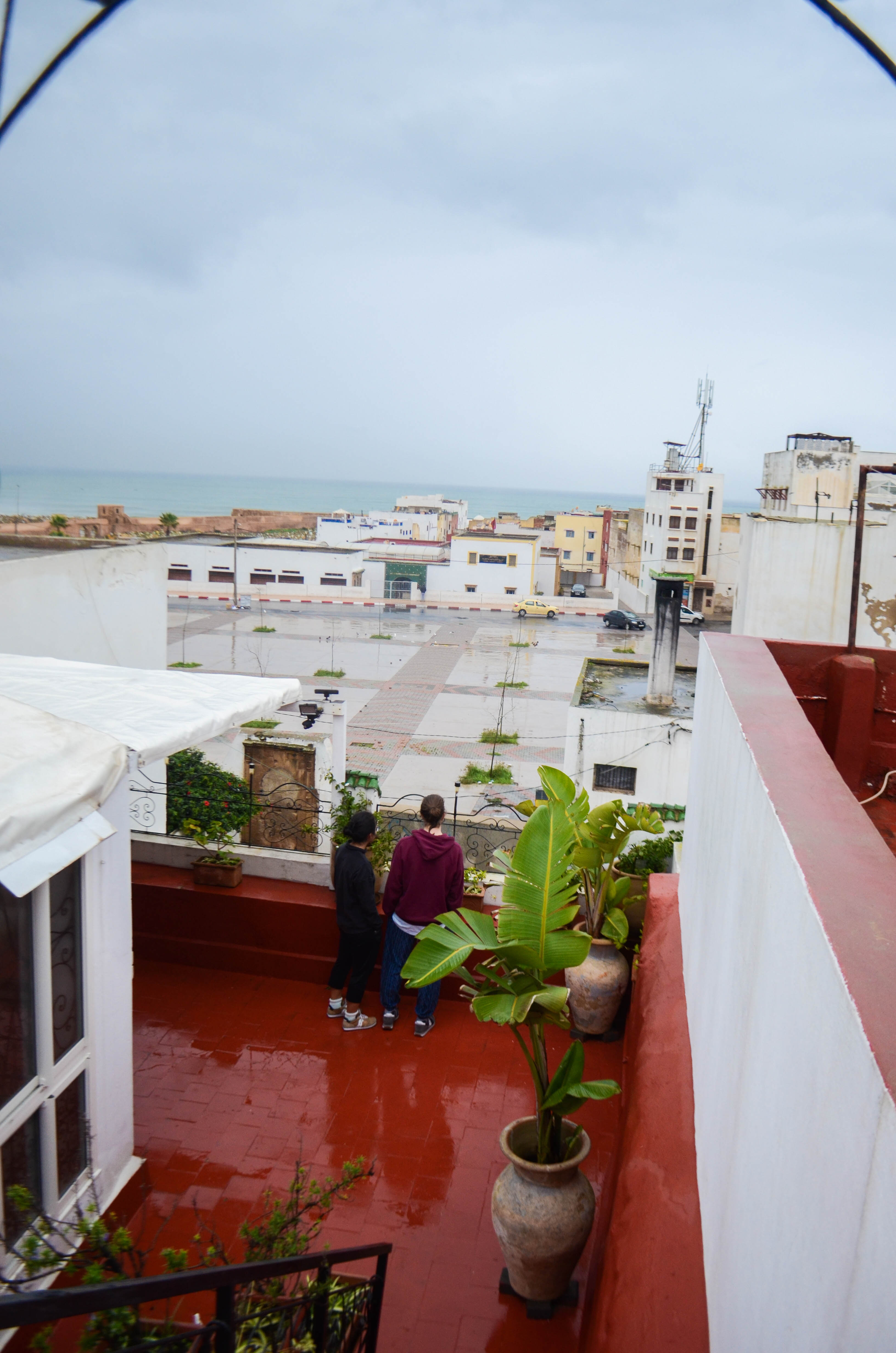
The view of the ocean from the riad.
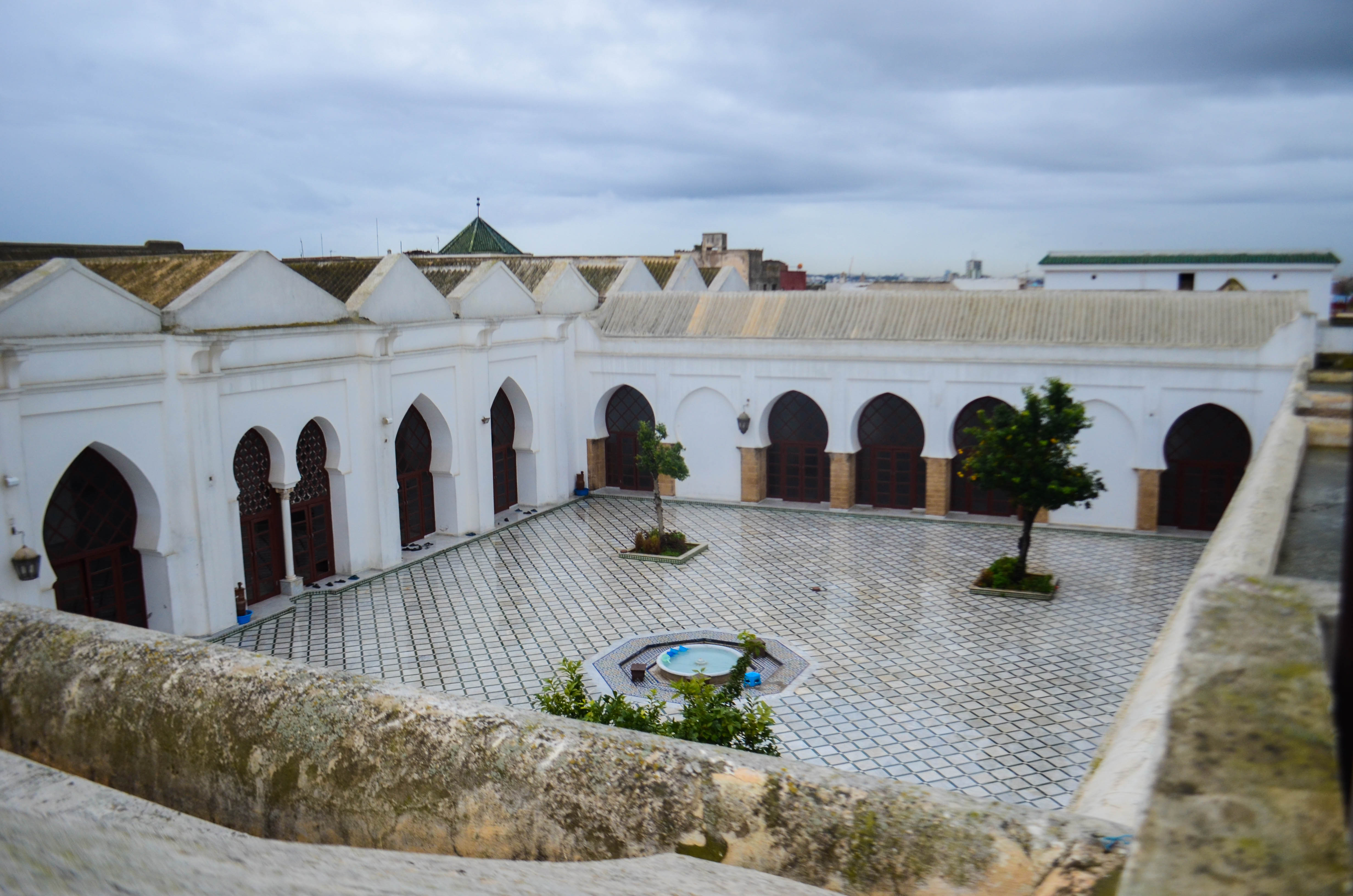
The mosque courtyard directly below our terrace.

A view of our central courtyard where we ate each day from a walkway above.
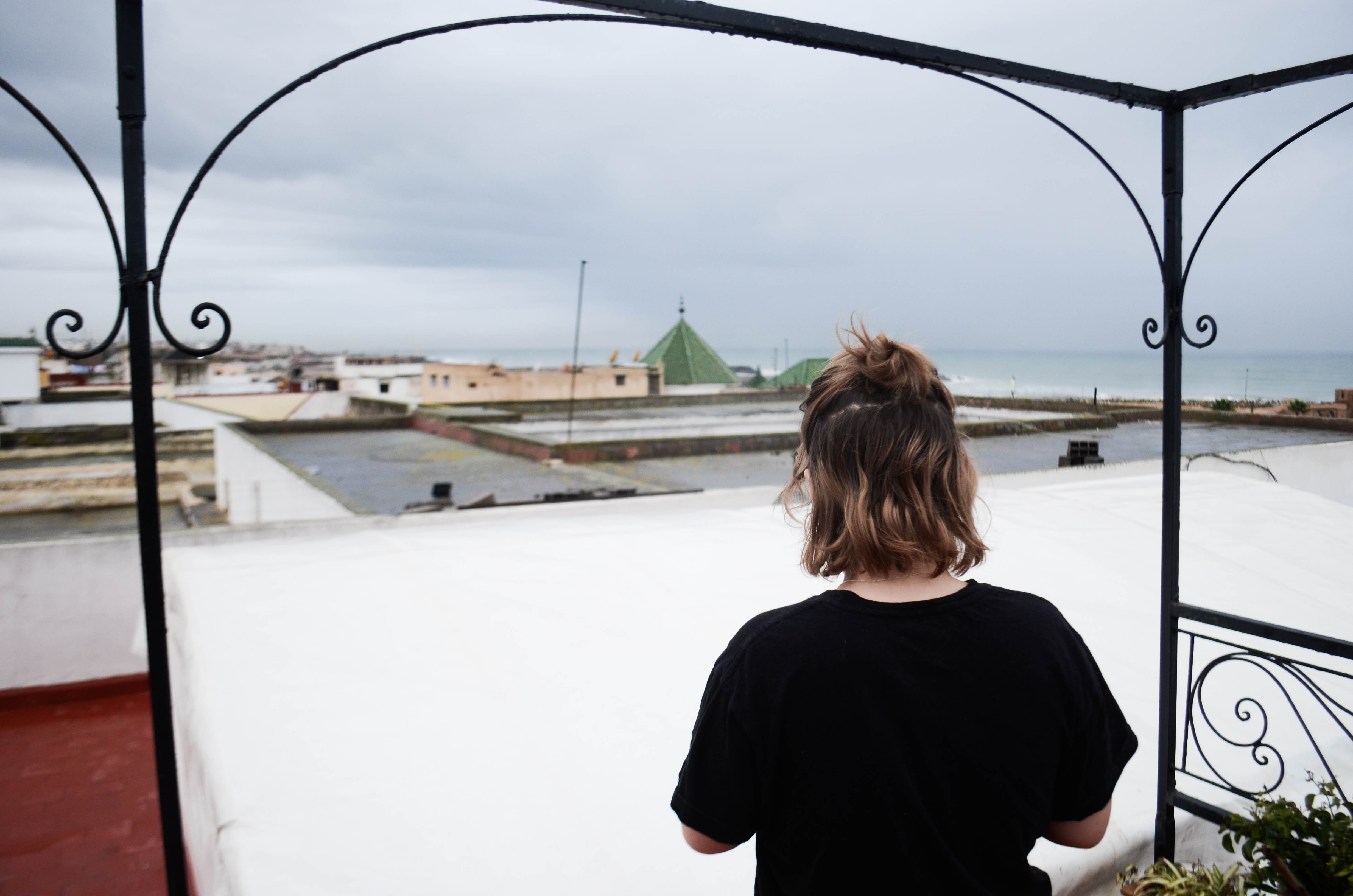
Kendall out on the terrace.
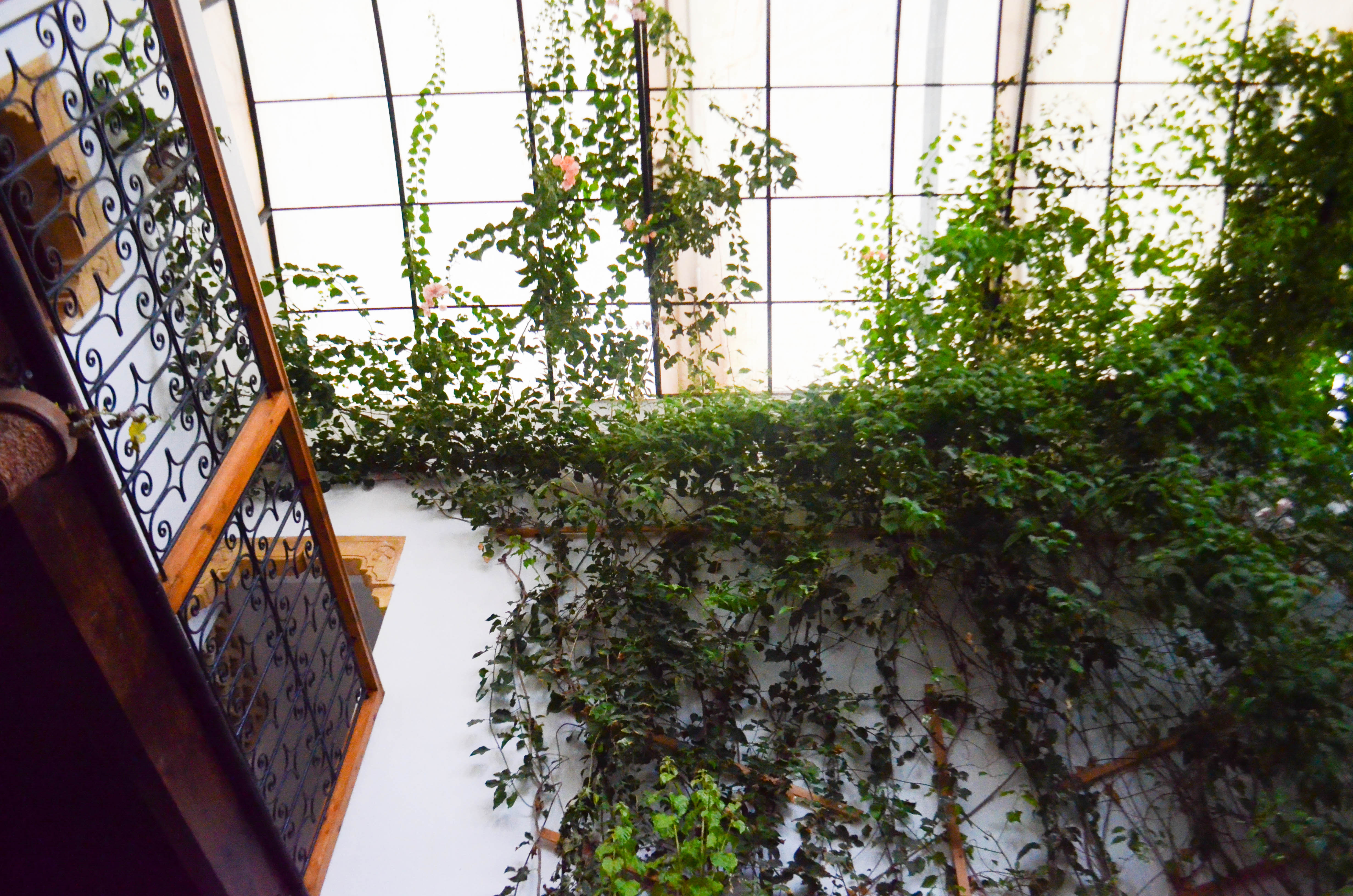
The vines growing along the top of the courtyard.
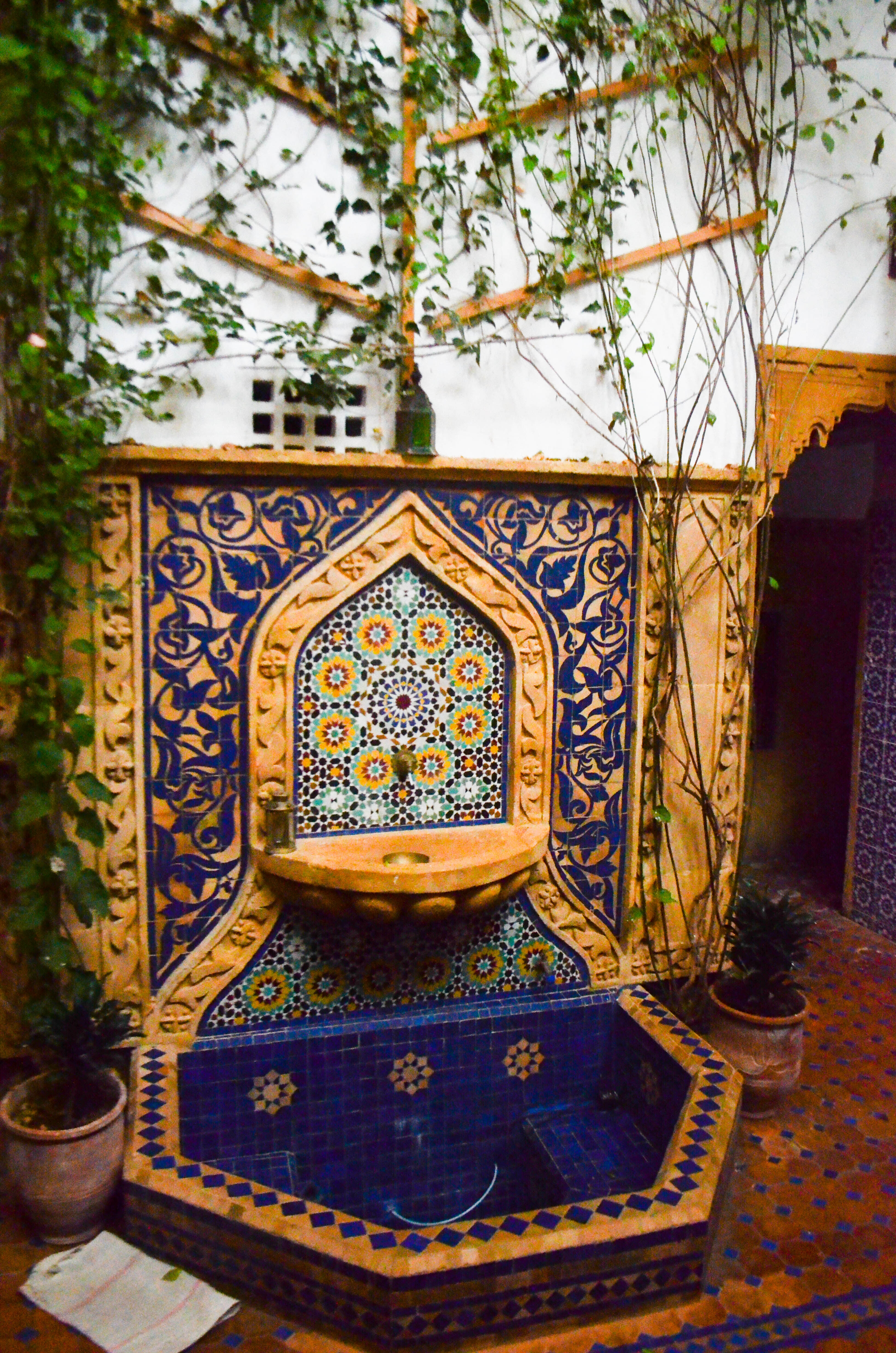
The beautiful tile work in the central courtyard of the riad.
The riad was actually not located in Rabat proper, but rather in the neighboring city of Salé. This city is just across the river from Rabat, and felt a bit more local than the bigger city. The riad was also located right beside the Grand Mosque of Salé. This proximity was interesting, because each day kicked off with the call to prayer at dawn. This call to prayer is loud. It involves a man chanting into a loudspeaker, and it felt like this man was inside my head each morning. To illustrate how loud it was, I could hear each syllable clearly through my earplugs. But this interesting regular occurrence did not make the lows list because it only added to the cultural experience.
Our ‘Host Mom’ Hannan’s Cooking
Another amazing part of our riad was the woman we affectionately referred to as our ‘host mom.’ She is a relative of the owner of the AirBnb that helped checked us in and is available to cook traditional Moroccan food for reasonable prices. She only spoke Arabic and French, so we played a fun game of trading French words, English words, and whatever actions we could come up with. It was endearing and an interesting challenge.
We arrived at the riad Thursday night to traditional Ramadan soup that they typically eat to break the Ramadan fast. This was served with dates, sweet crunchy treats, and bread, all for the low price of 100 dirham (about $10). For about $2.50 a person, we enjoyed a wonderful Thanksgiving meal together, during which we all went around and shared what we were thankful for this year.
Each morning we got out of bed for a huge breakfast with mint tea that also cost about $2.50 per person. It was the perfect way to start each morning. My favorite confection was a spongy bread reminiscent of Ethiopian injera, which my dad can tell you is one of my favorite foods of all time.
- A fresh pot of mint tea.
- Spongy bread for breakfast.
On our last night for dinner, she made us the biggest plate of couscous that anyone has ever seen. We all ate generous portions, and it still looked like we had barely touched the plate.
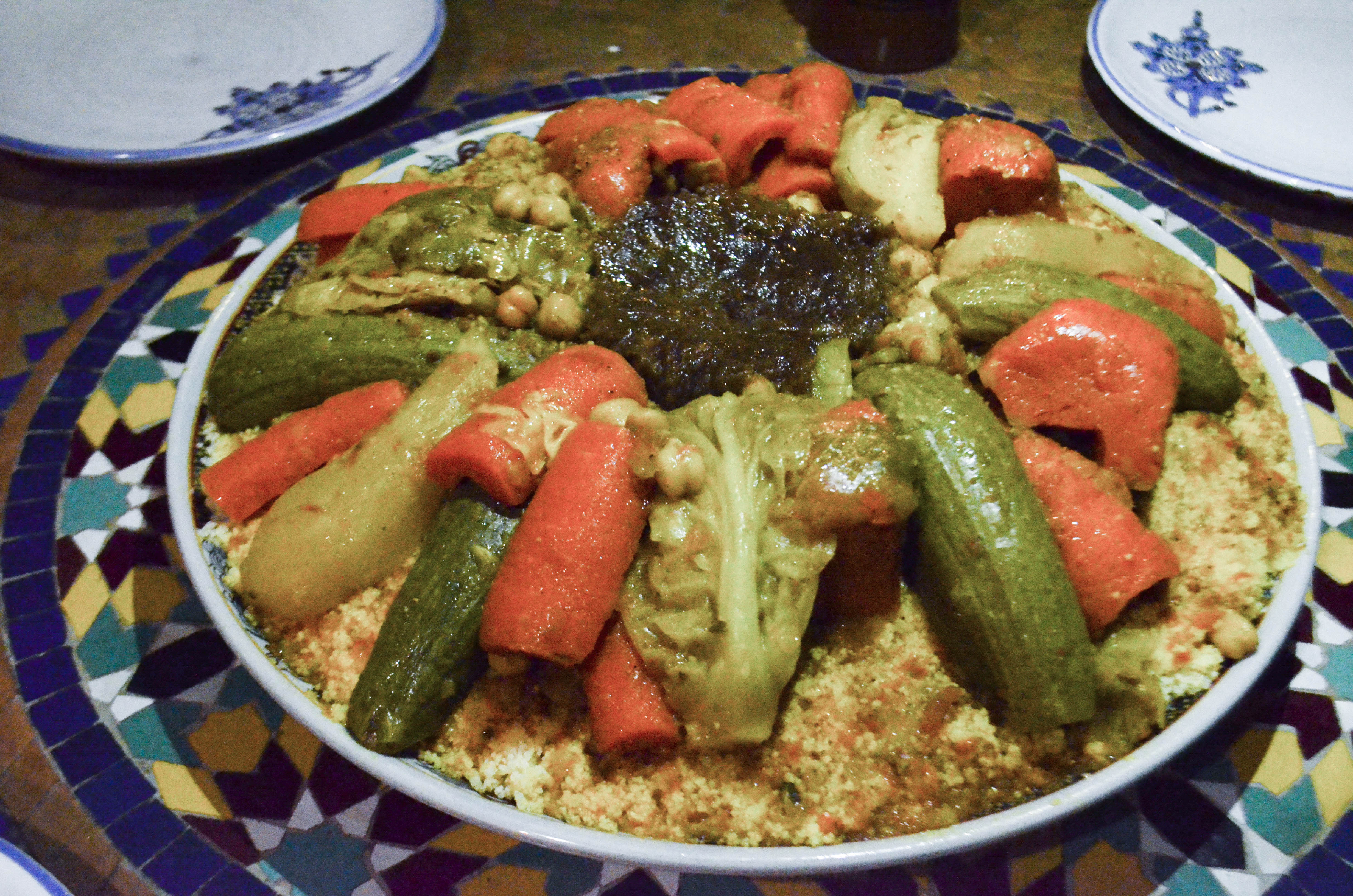
Couscous dinner prepared by our “host mom.”
The traditional food was amazing, and definitely a highlight of the trip.
Our “Tour” of Salé
As we walked out of our riad on Friday morning, we were greeted by a man that tried greetings in Arabic and French before finally landing in English. Then, in some whirlwind of movement, we ended up on an hour and fifteen minute tour of Salé with him. I knew from all of my prior research that this man was going to expect money at the end of this adventure, and I was right, but the 50 dirham (about $5) per person that he requested was well worth the journey.
He first led us around the Grand Mosque, pointing out features along the way. Then, he guided us up onto the city walls for a view of Rabat, the ocean, and the stunningly vibrant cemetery below.
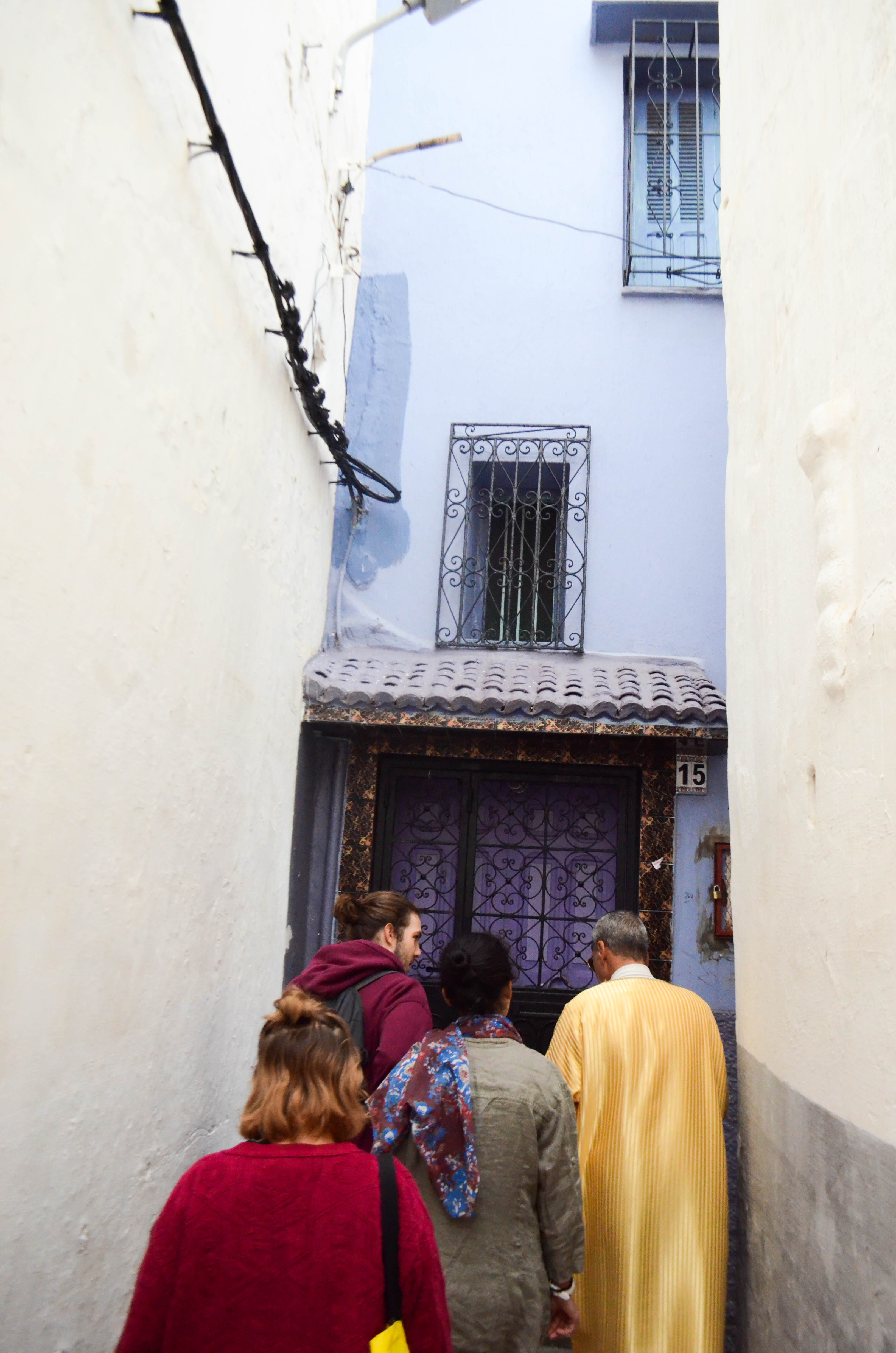
The man in his golden kaftan leading us around Salé.
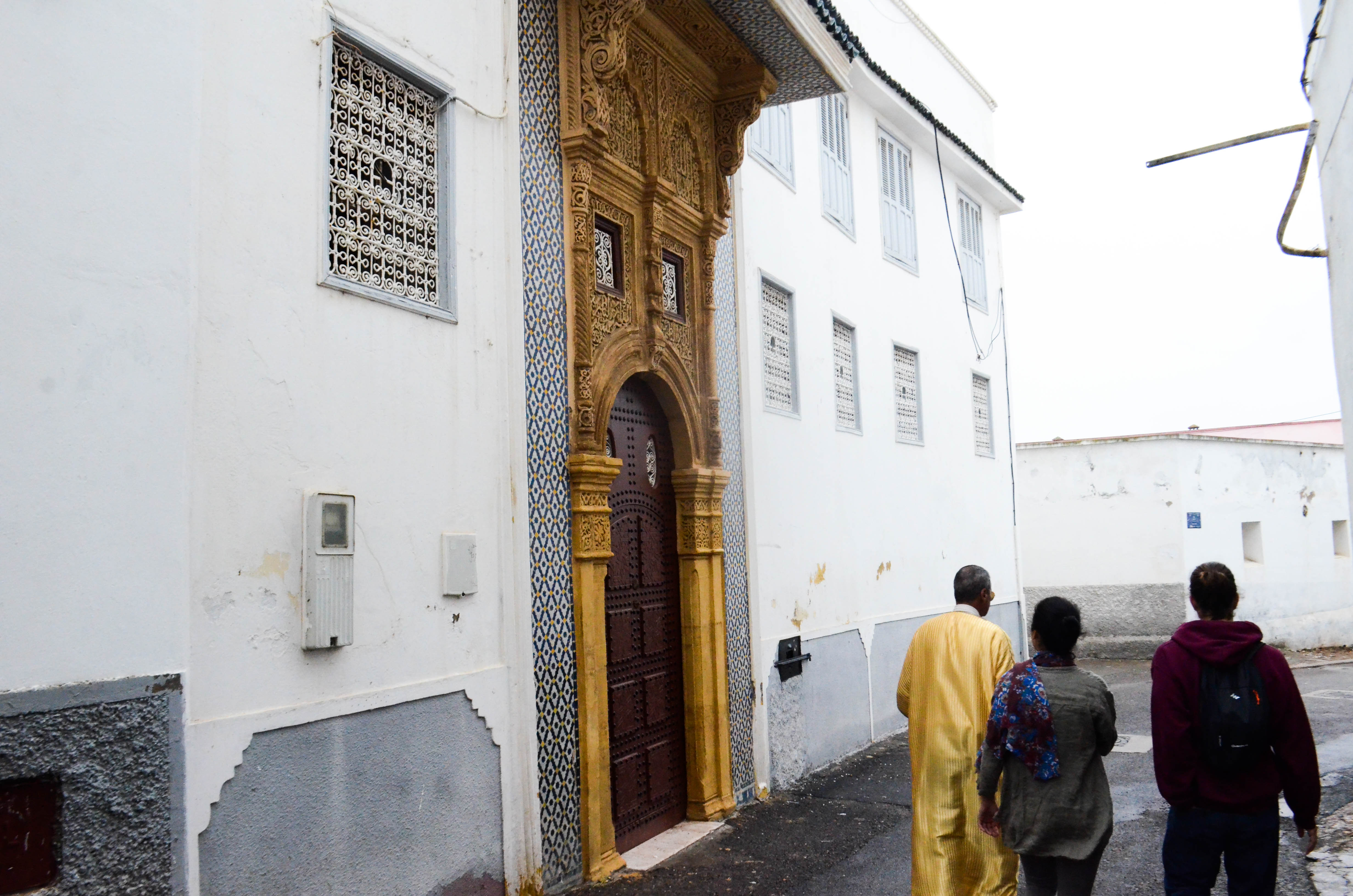
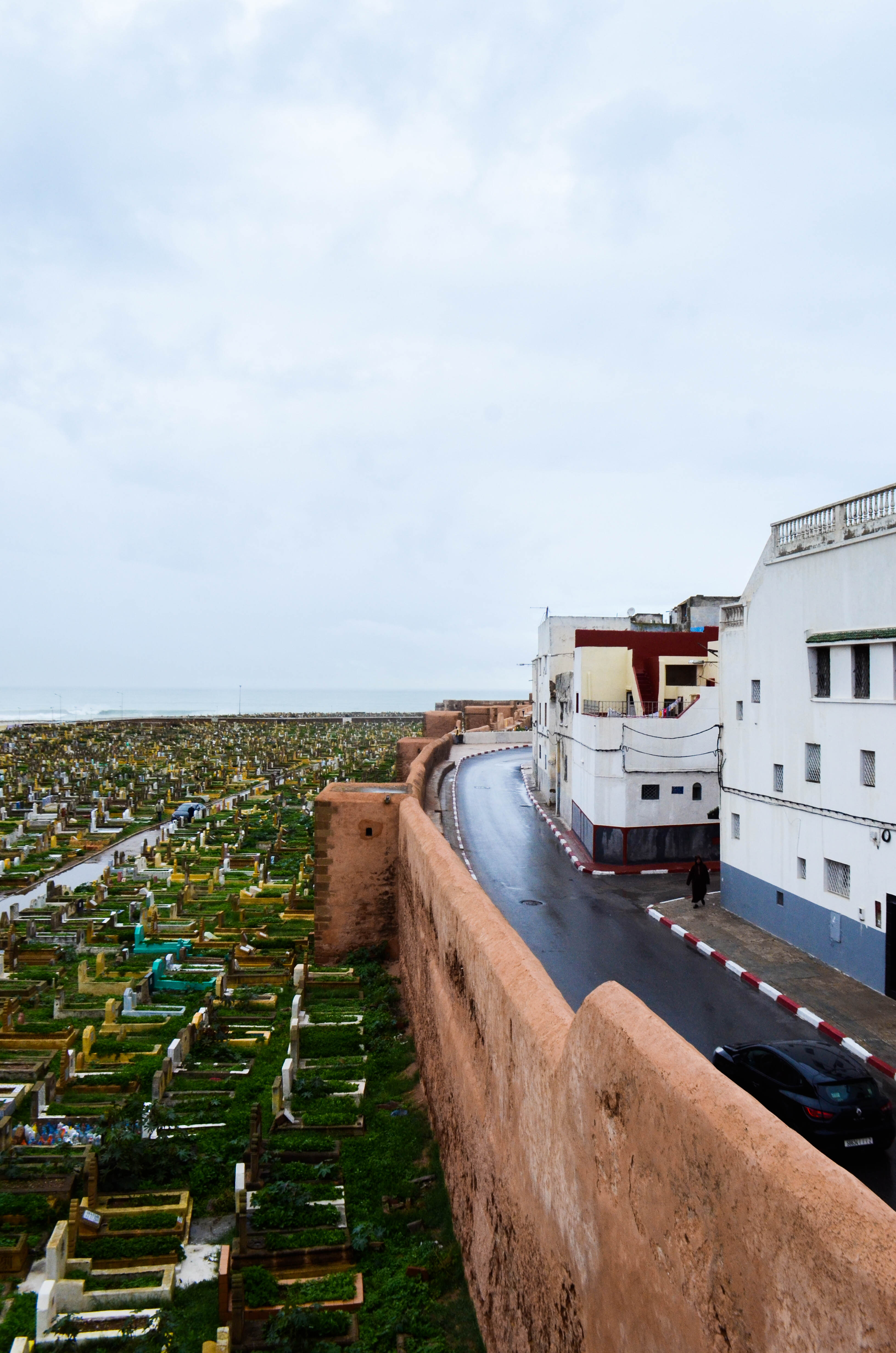
A view of the city walls and the cemetery below.
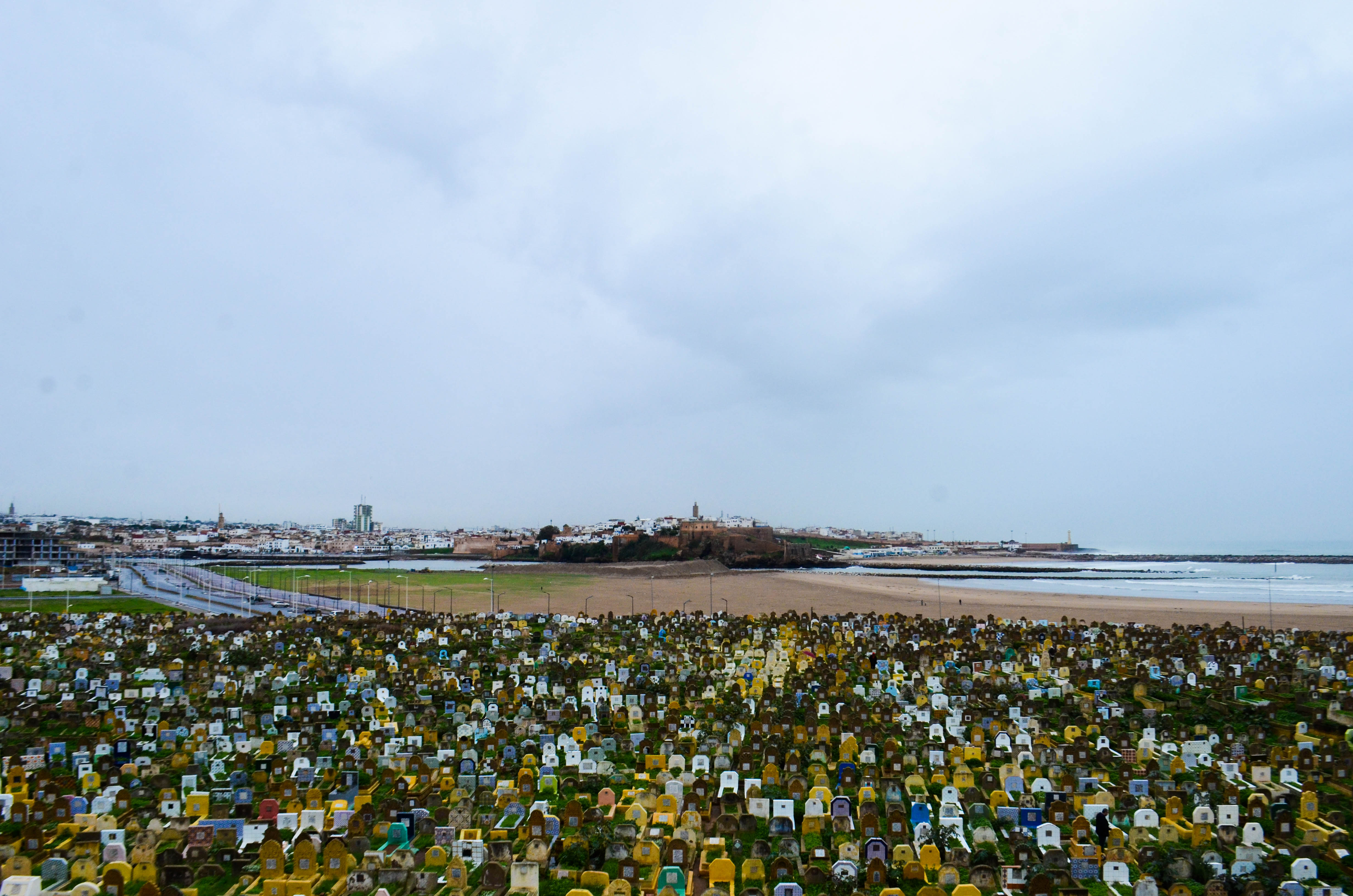
A view of Rabat and the cemetery.
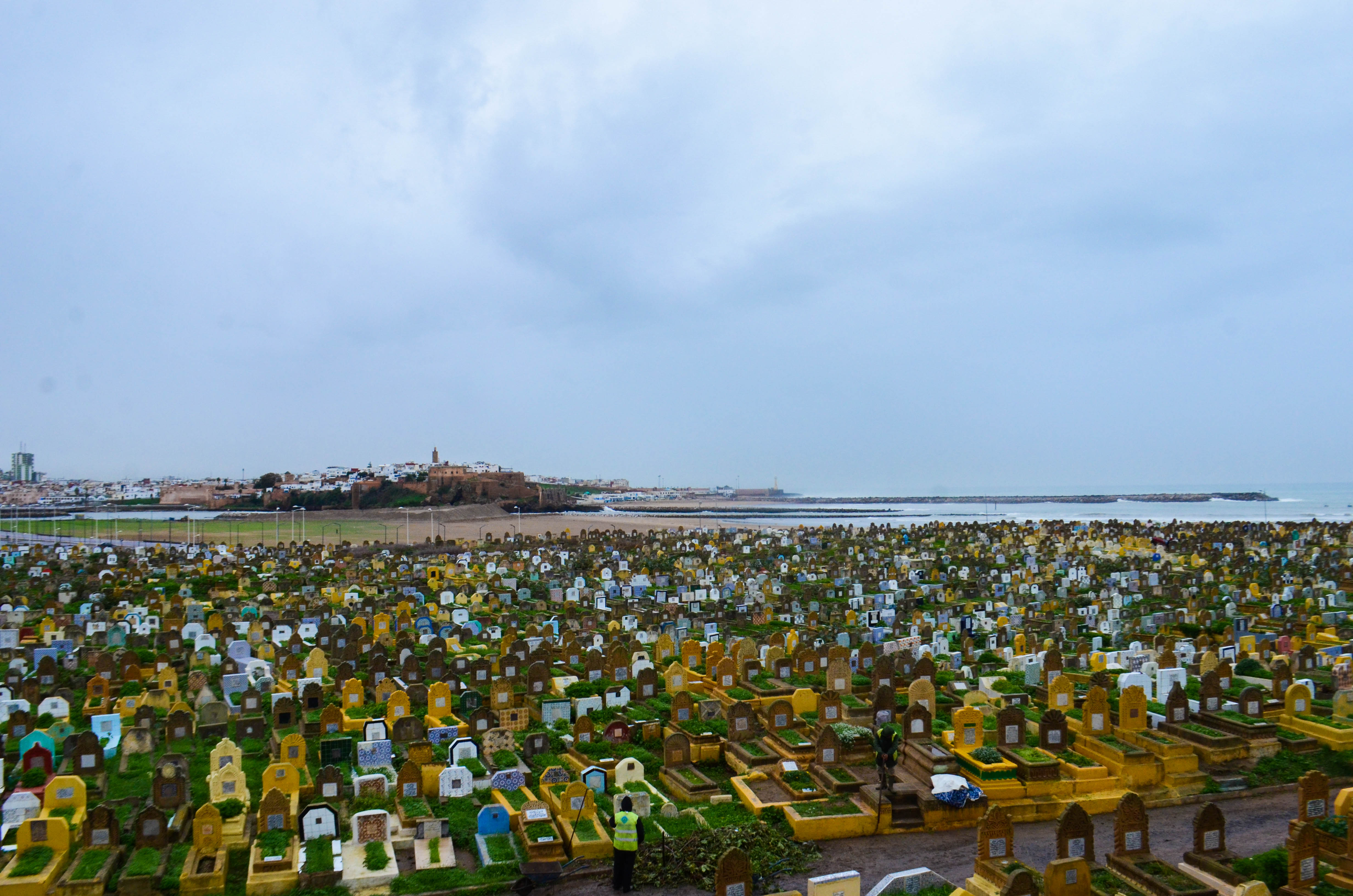
He continued on to show us adorable animals (Morocco is known as the capital of cats!), local bathhouses, and the local souks, or markets, in Salé.
- The hall of a local souk.
- Greens seen in the local souk.
- The minaret, or main tower, of the Grand Mosque.
The tour was impromptu and kinda weird, but did give me a better understanding of the area and the culture.
Kasbah of the Oudayas
We rocked the Kasbah while in Rabat. The Kasbah is a large, ancient castle filled with a city painted blue. We had a good time exploring the castle walls and the blue, maze-like walls of the inner city.
The Souks of Rabat and Casablanca
In both cities, we visited the souks, or markets in search of vibrant wares, and we were not disappointed. We wandered through the markets, looking at colorful rugs, tiled ceramics, vibrant scarves, and aromatic spices. I picked up just a few things to take home, after haggling, of course.
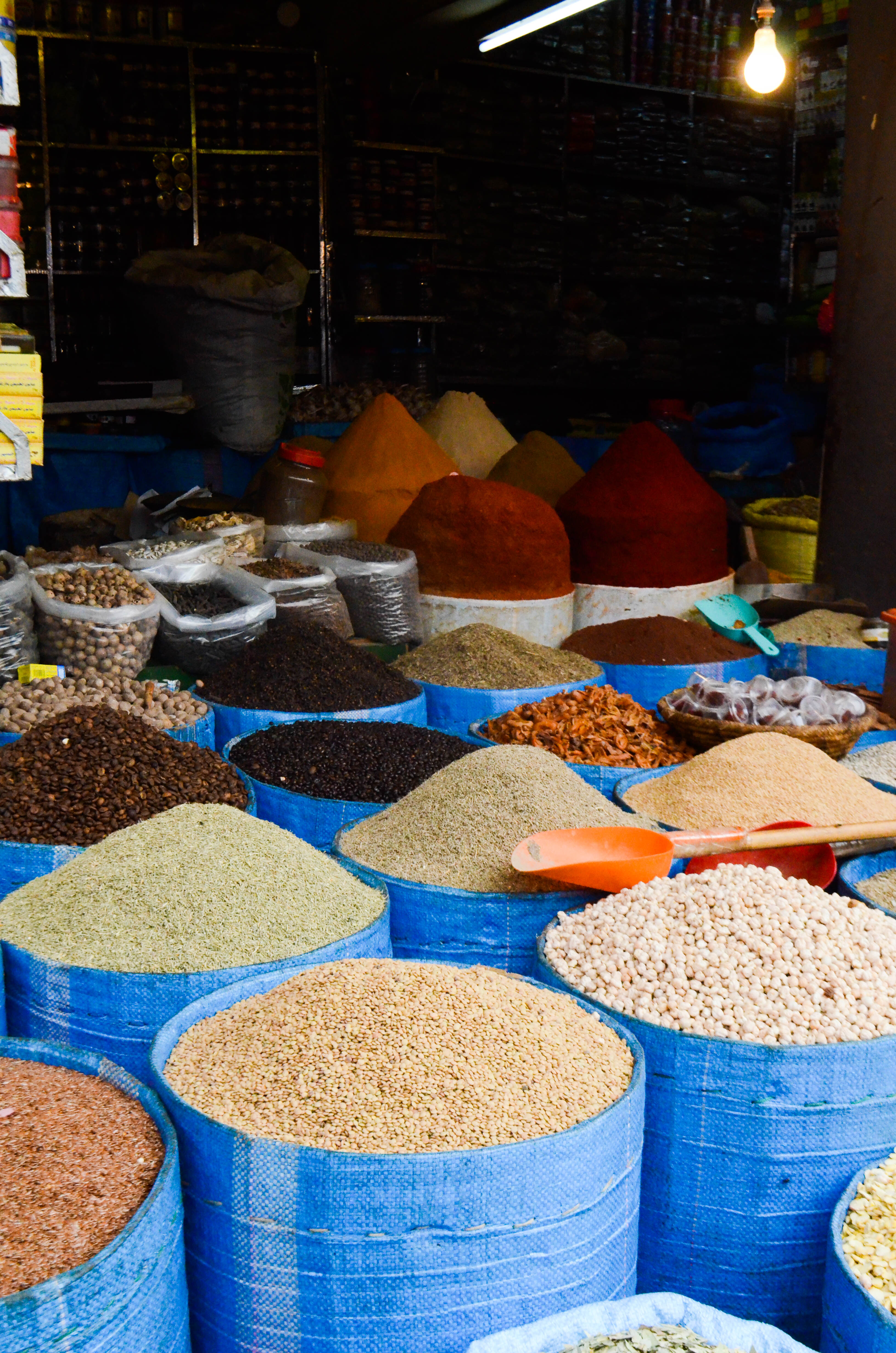
Spices and grains in a Rabat souk.
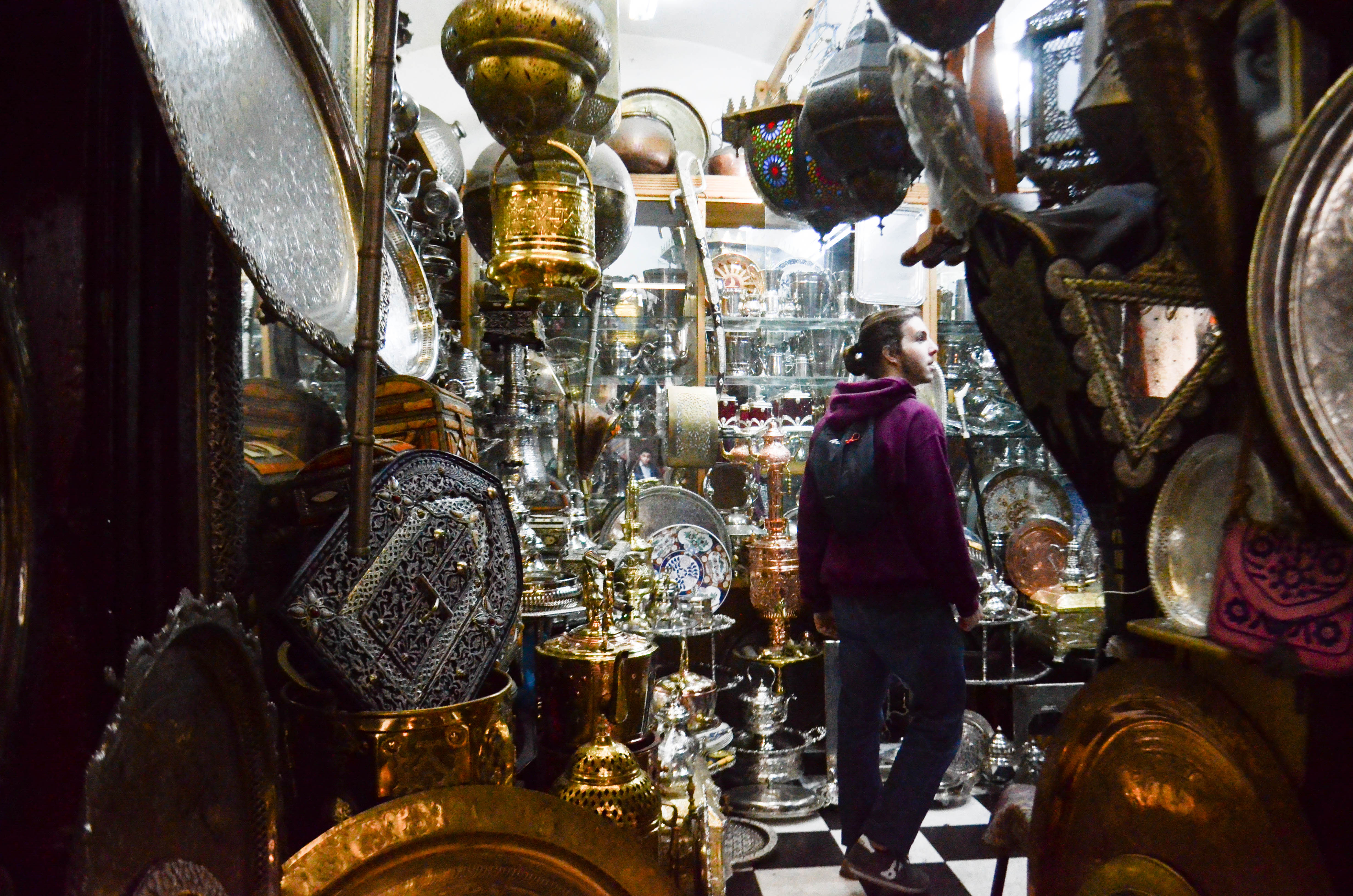
Ross browsing in a Casablanca souk.
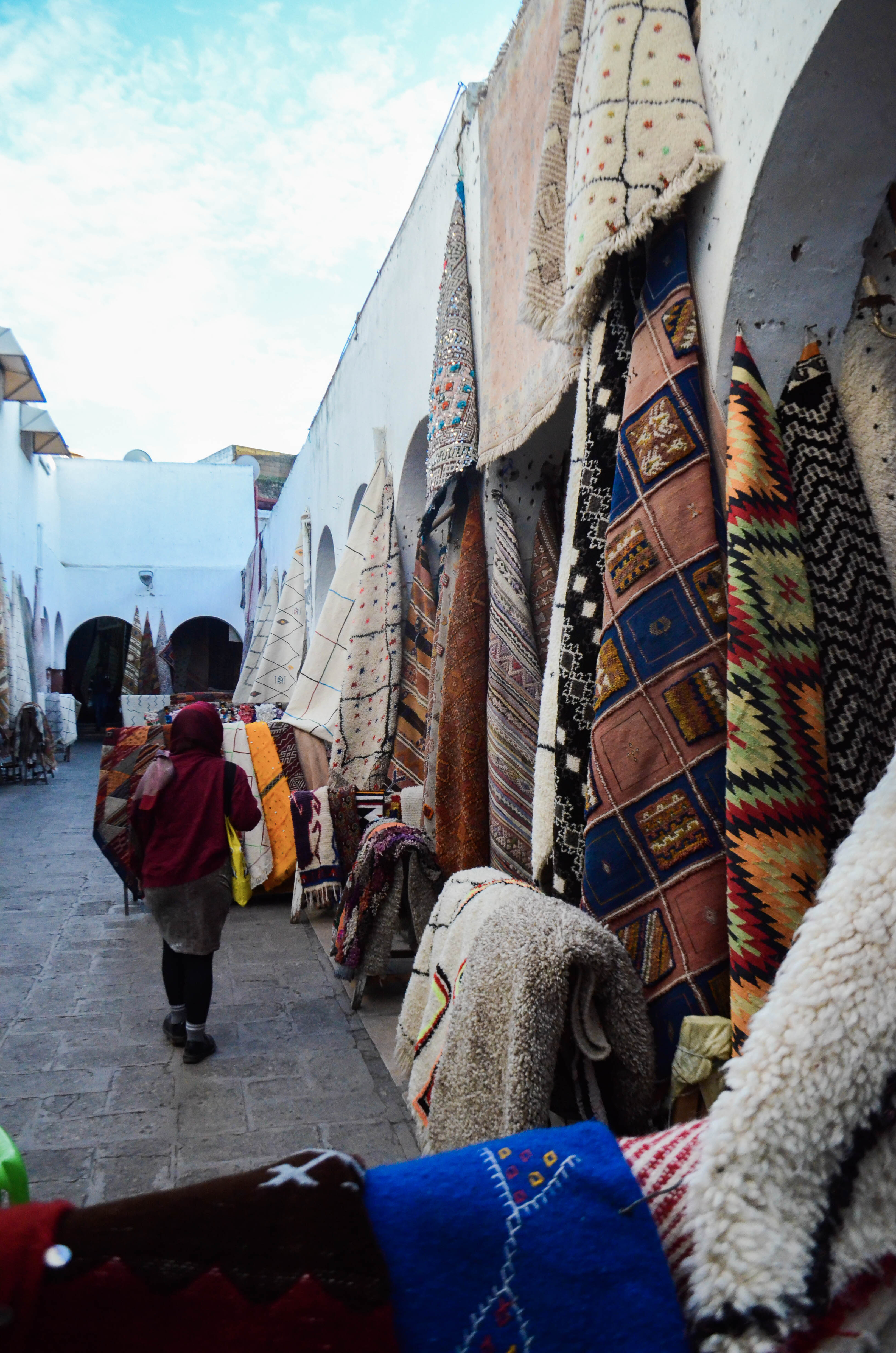
Kendall wandering through rugs in a Casablanca souk.
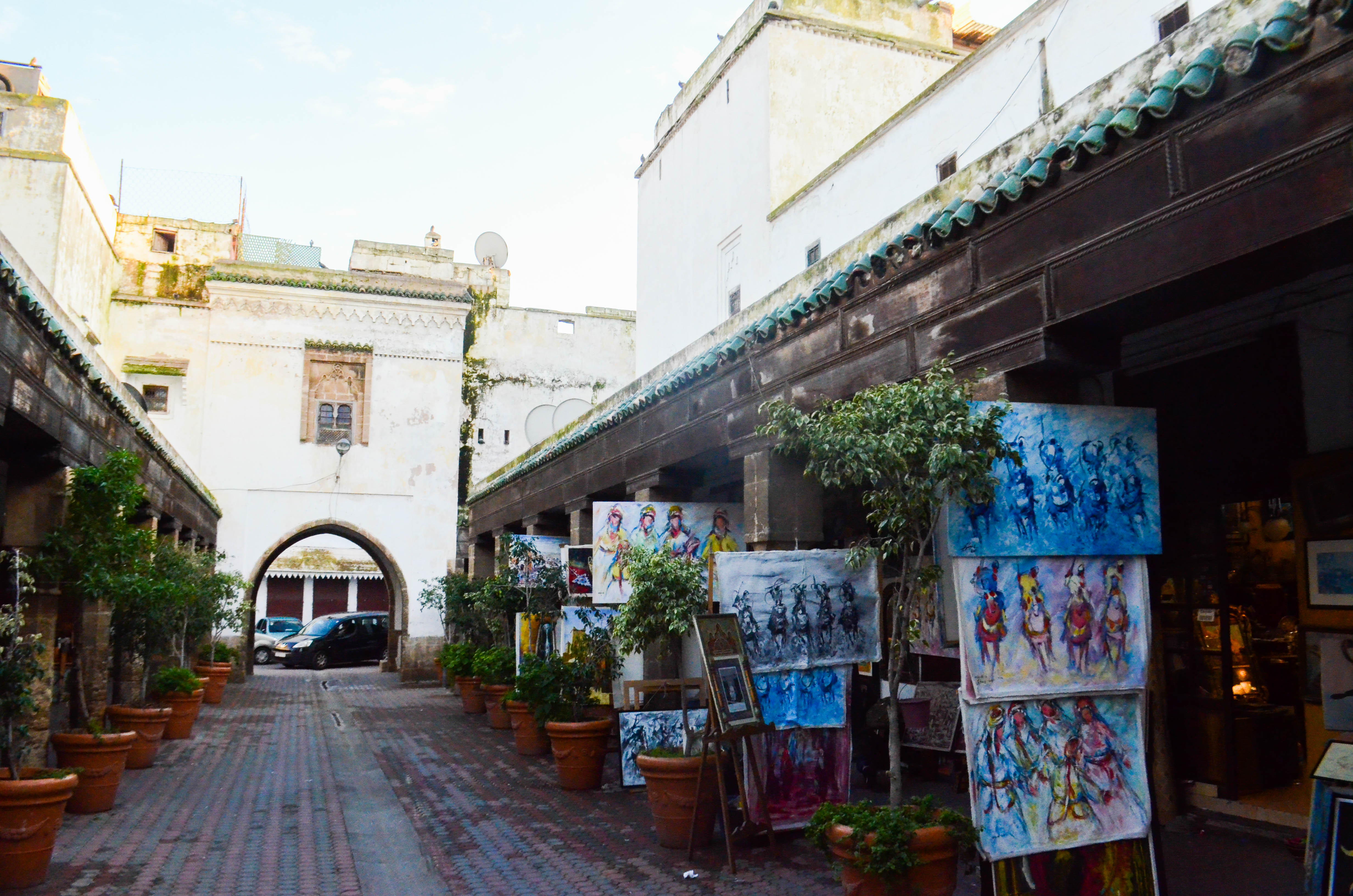
Paintings for sale in a Casablanca souk.
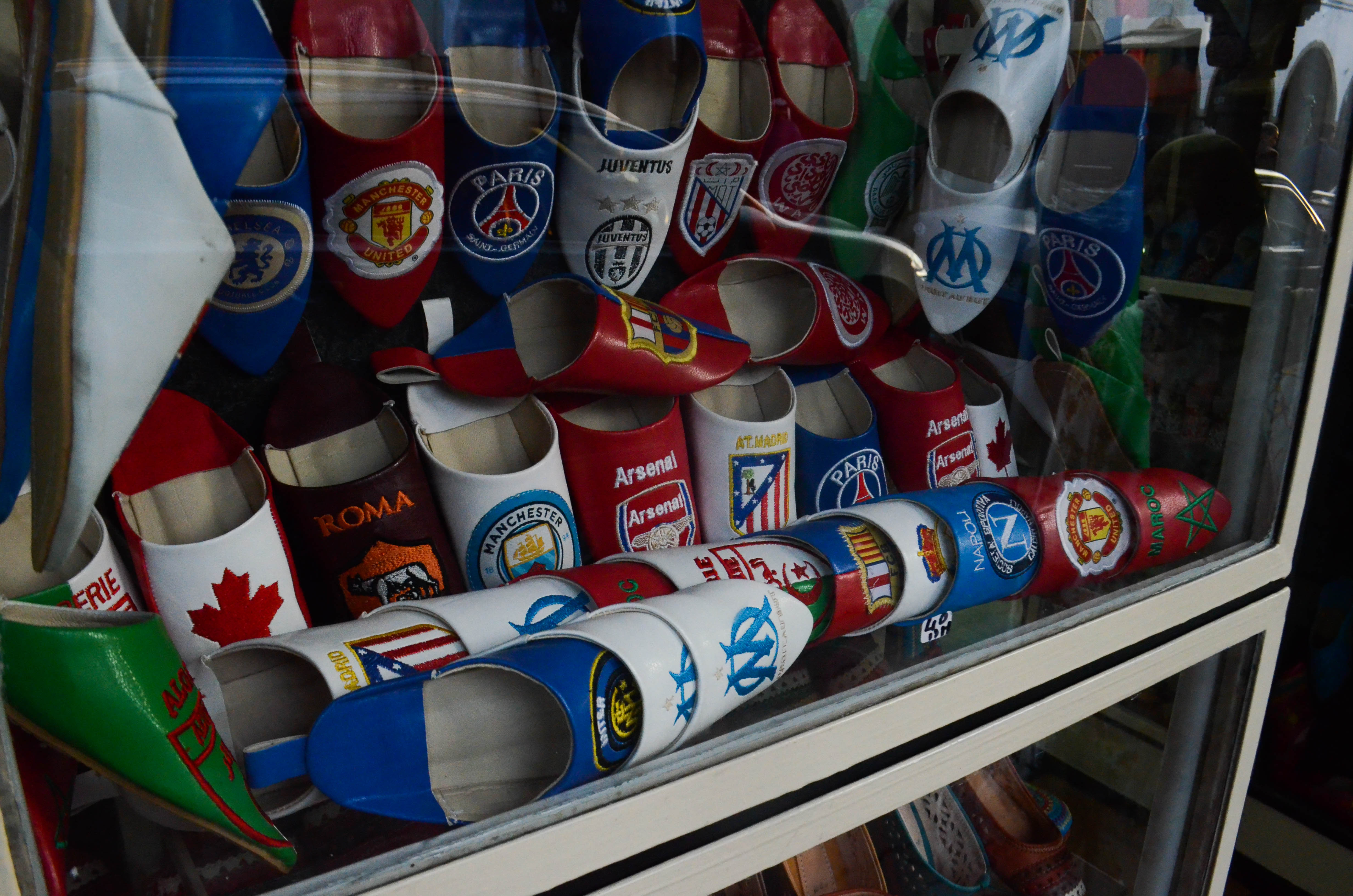
Embroidered slippers for sale in a Casablanca souk. Peep the Canada slippers in the corners.
The Hassan Tower
Up on a hill in Rabat stands the Hassan tower and the remnants of a proposed construction of a massive mosque in the 12th century. This mosque was supposed to be the biggest in the world, but construction stopped after the death of Sultan Yacoub al Mansour that ordered the building of this mosque. Now, the space is an UNESCO world heritage site and includes the mausoleum of King Mohamed V, who died in 1961. It’s odd to see the 200 started columns that were meant to be the support structures of the mosque, but the area is nonetheless cool to visit.
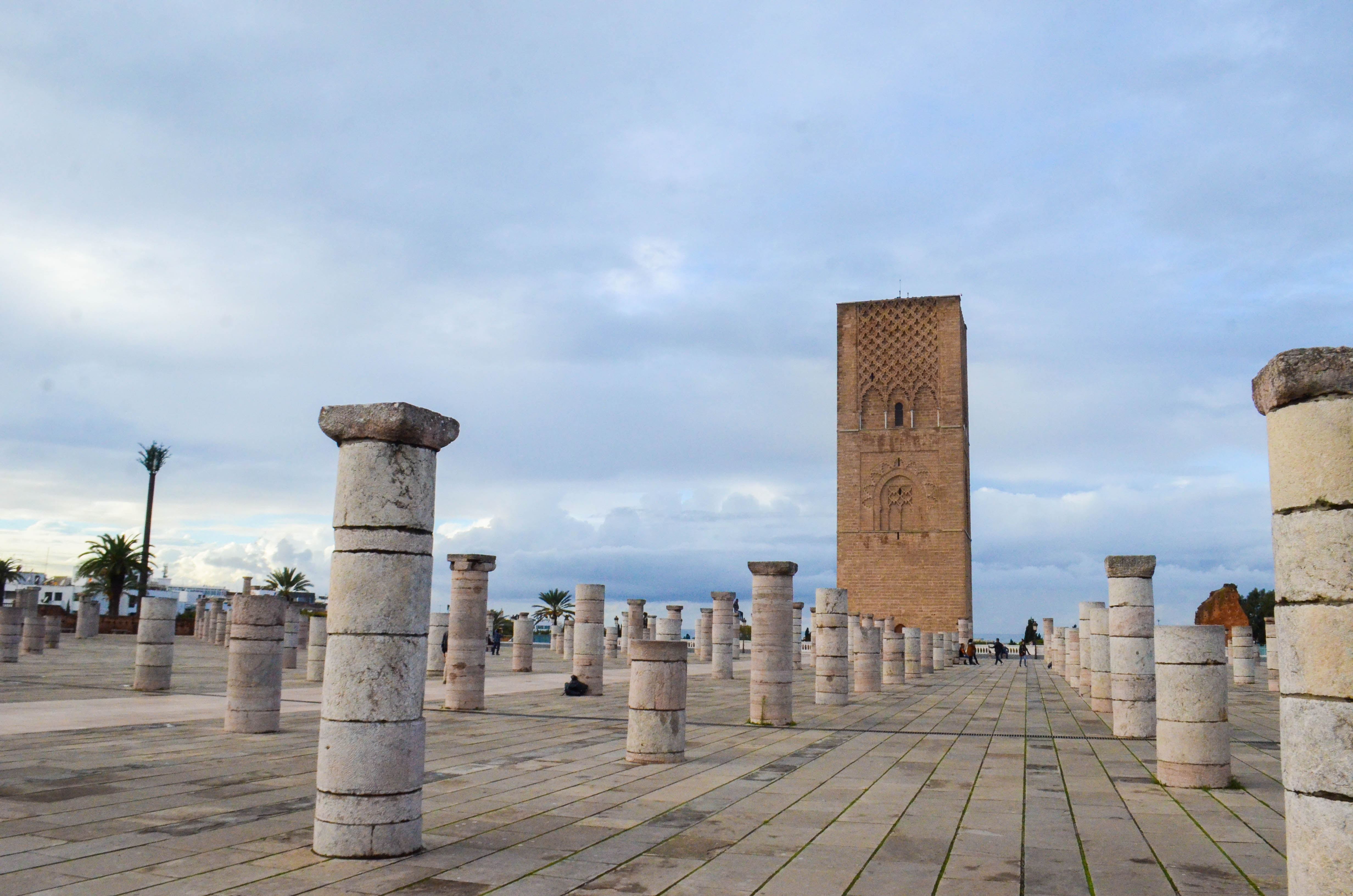
Hasan Tower and the columns.
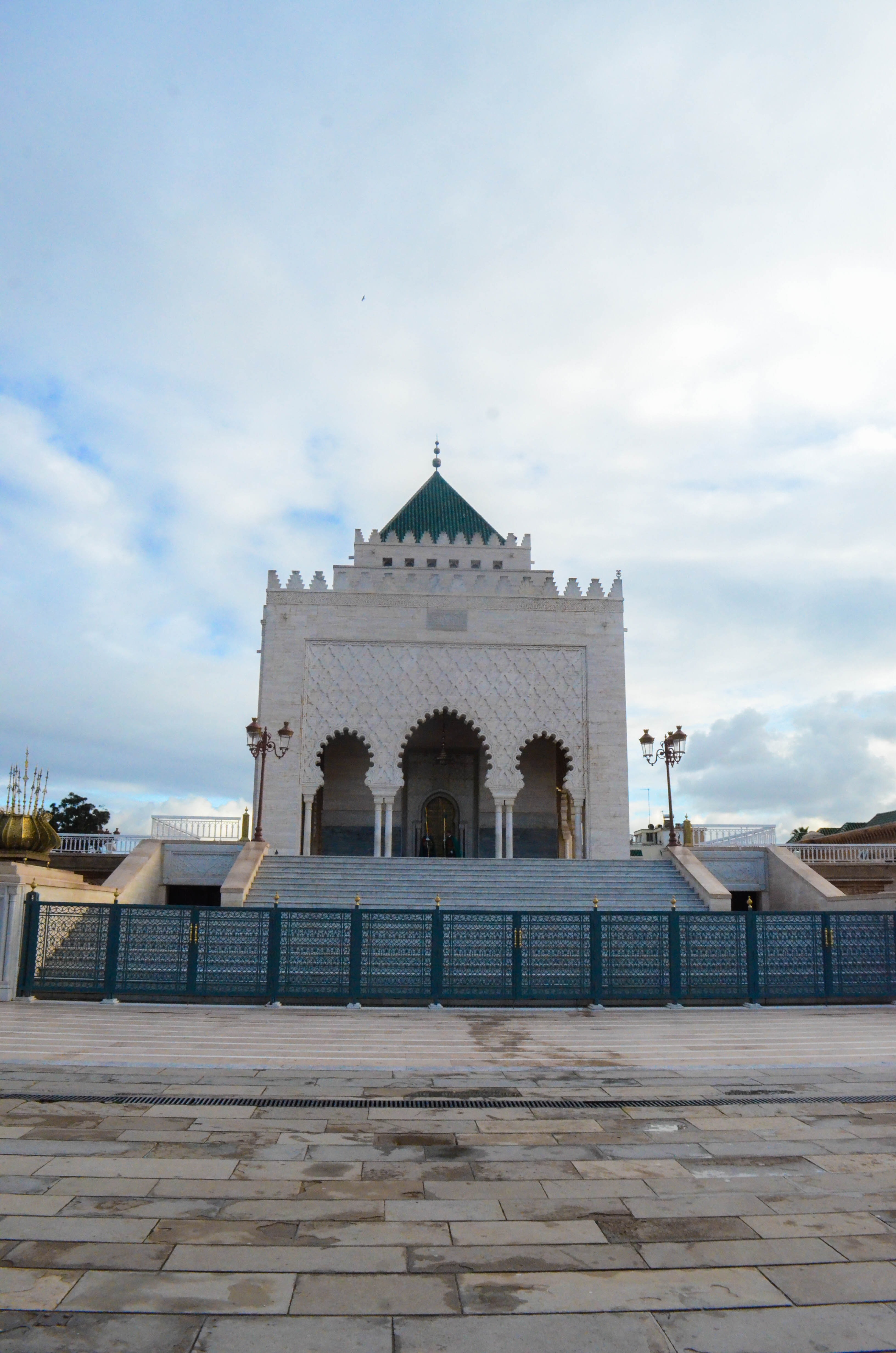
The mausoleum of Kind Mohamed V.
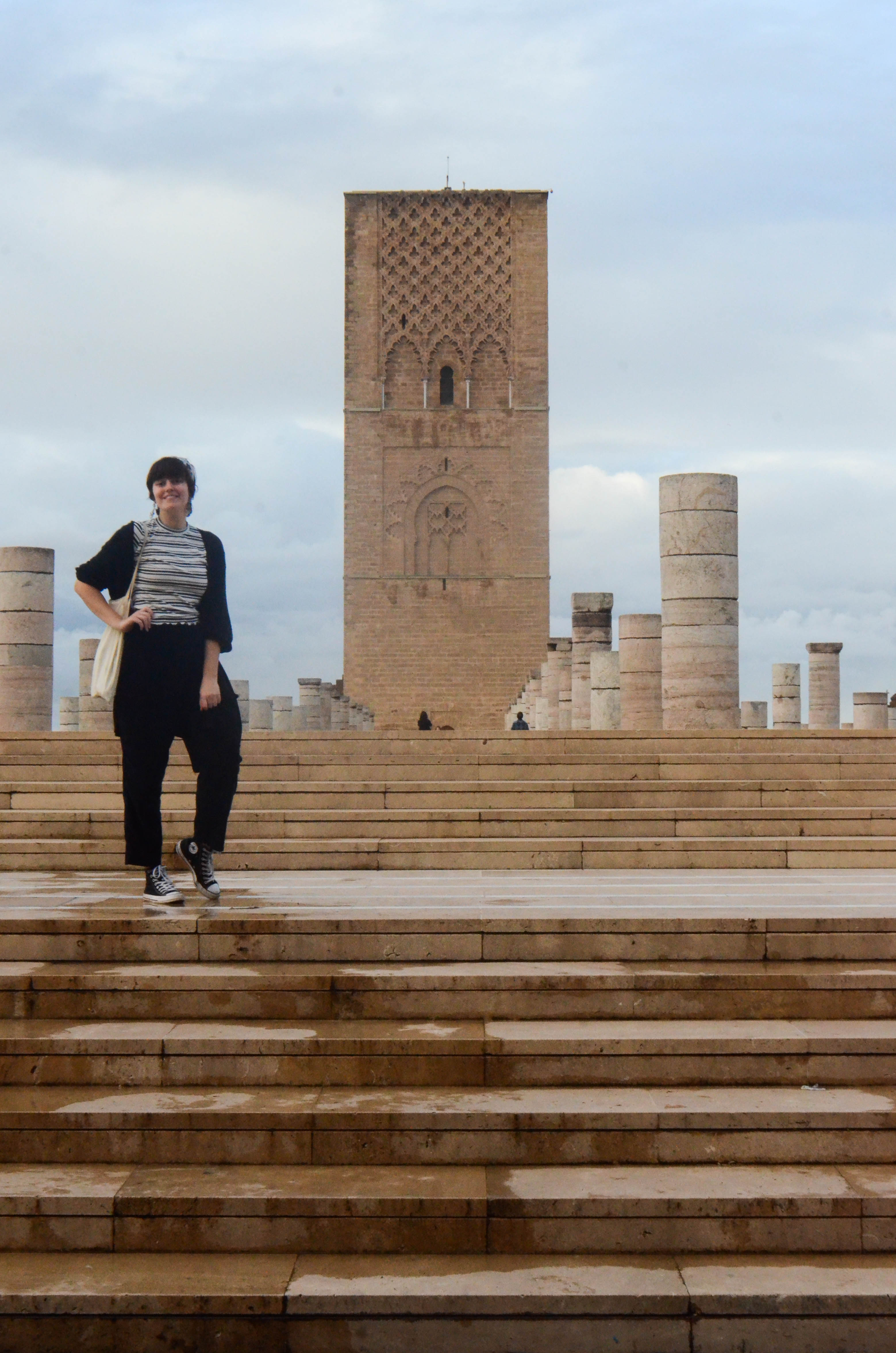
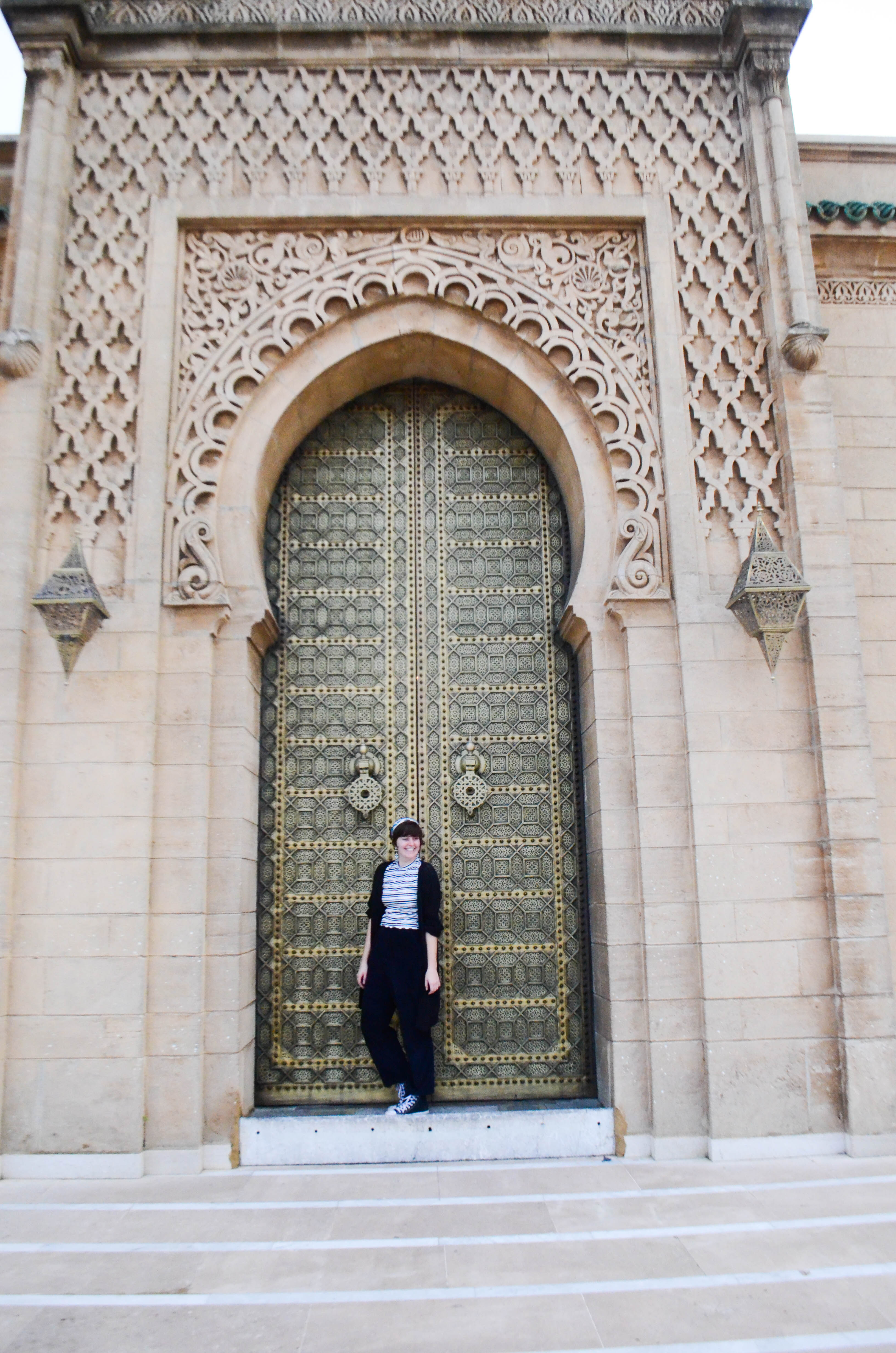
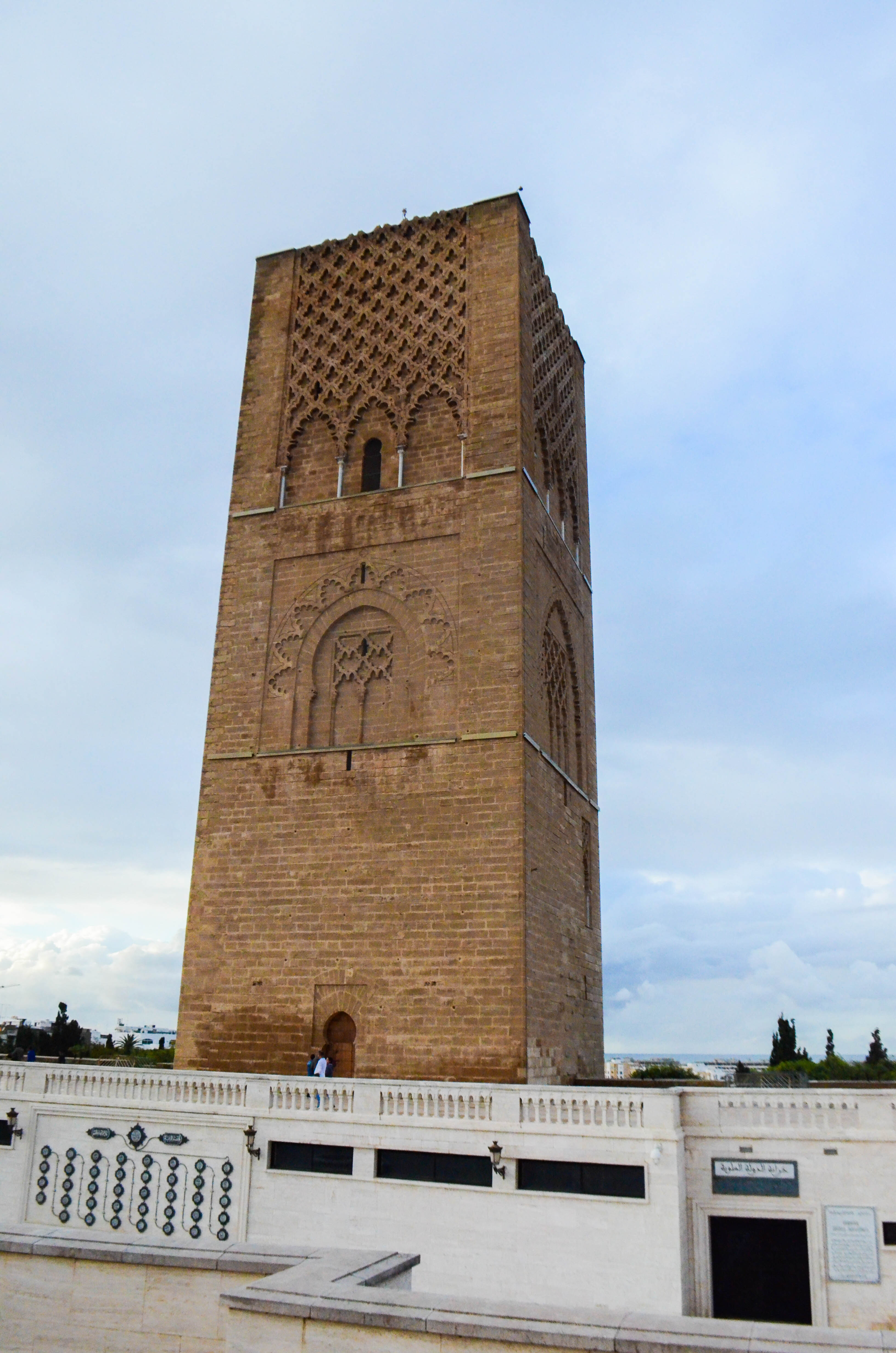
Hassan II Mosque
This mosque in Casablanca is what drew me to the city in the first place. It is magnificent, and is the largest mosque in Africa and fifth largest in the world.
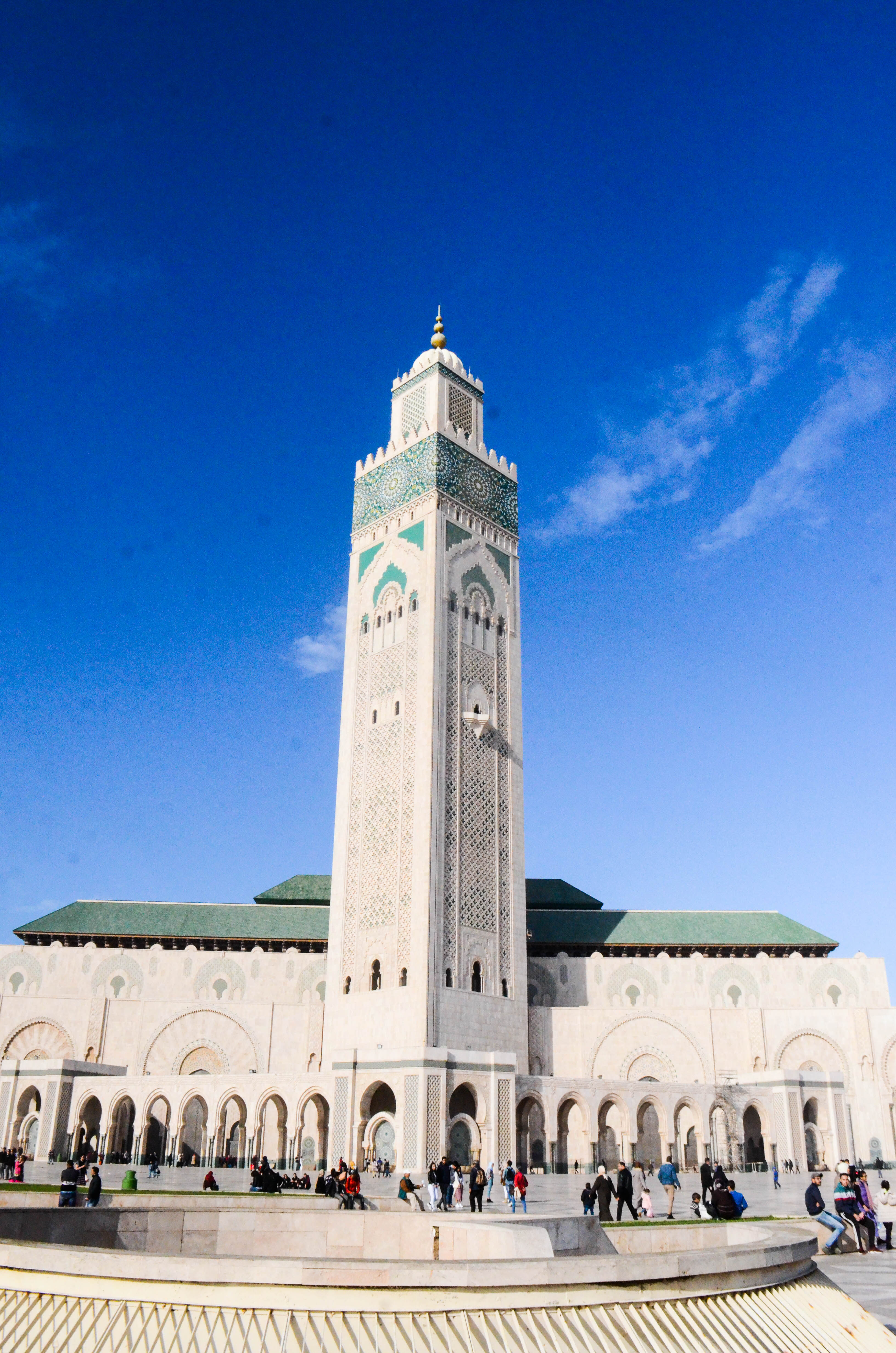
The Hassan II Mosque in Casablanca.
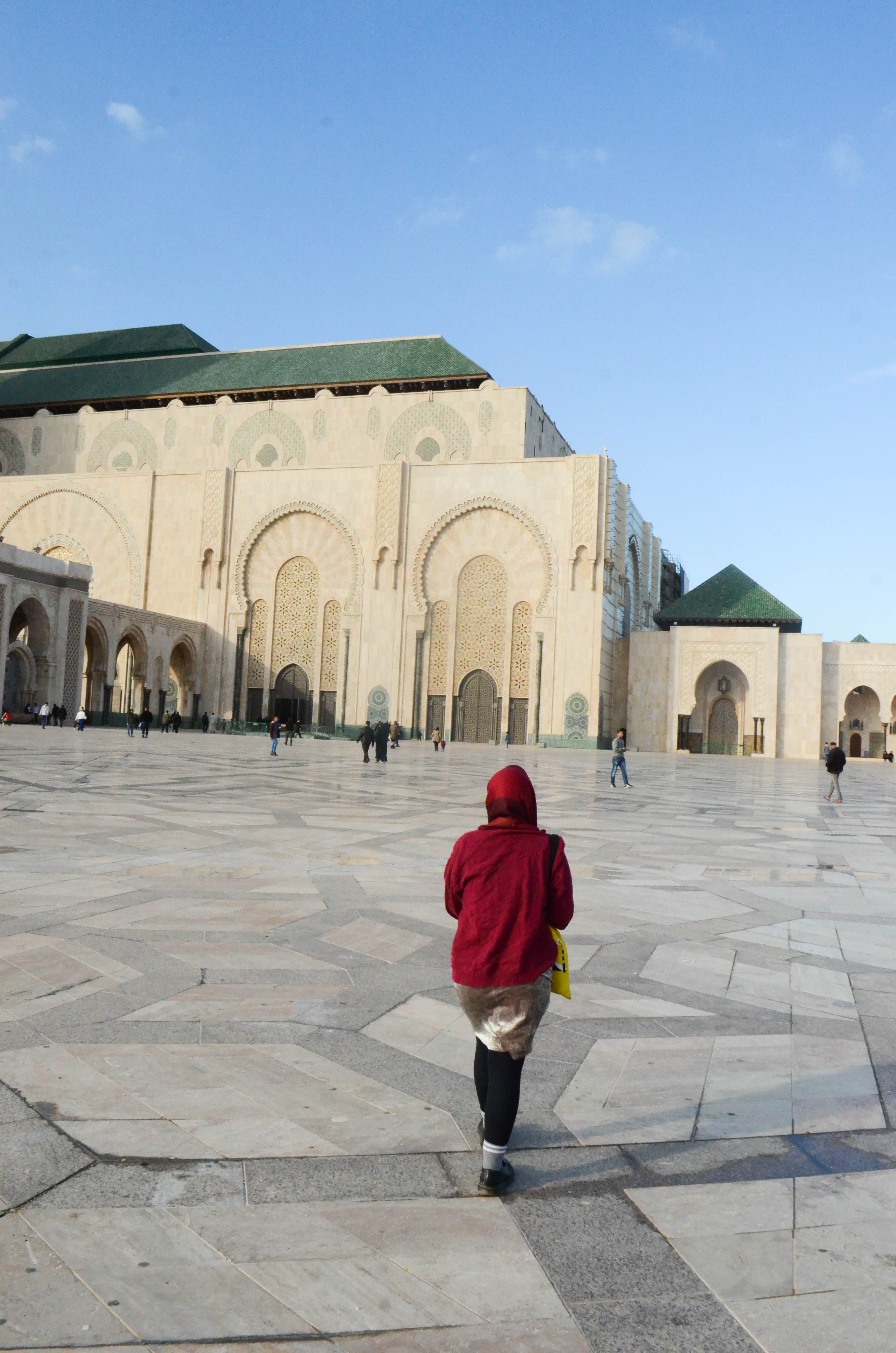
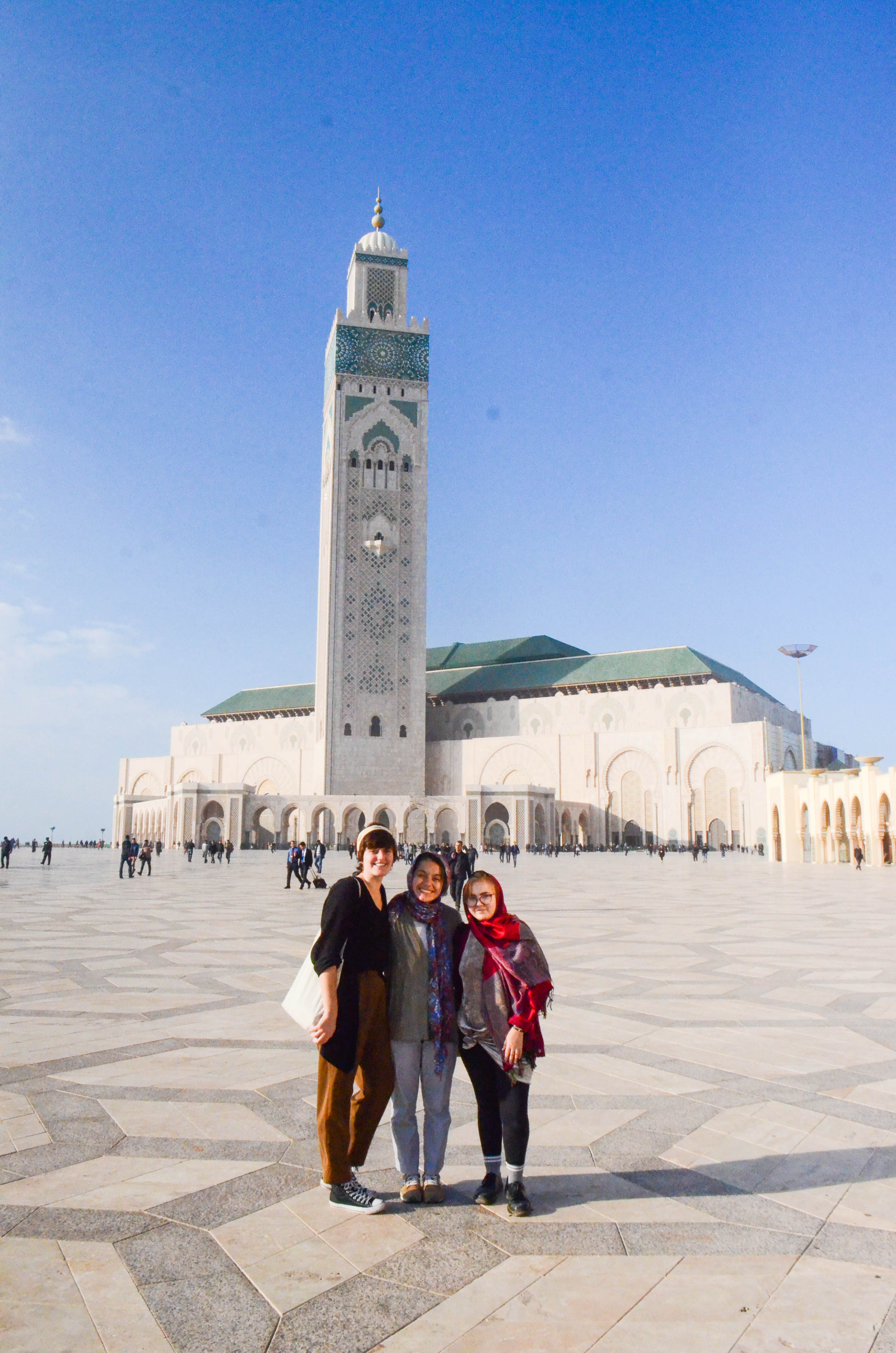
The Lows
A Reintroduction to Catcalling Culture
If you’ve read about my year in Costa Rica, you know that cat-calling in Costa Rica was intense and ever-present. I have not experienced any catcalling thus far in Spain, so Morocco was a jarring reminder of how I felt constantly last year. The men yelled out to us in any language they could come up with, and we felt incredibly conspicuous in pants and without head scarves.
It was incredibly difficult for me not to be able to lead my little group around, as we had to have Ross, our lone male, lead the way. We had to remind Ross to stick with us and not engage strangers in too much conversation, despite how friendly they may seem. I never felt explicitly unsafe, but I did spend much of my time in Morocco feeling uncomfortable.
Language Barrier
I took 2 semesters of Arabic in high school, and retained how to say ‘hello’ and ‘thank you.’ These phrases proved to be helpful, as Moroccans lit up when I greeted them with the local hello “baslaama” and thanked them with “shukran,” but we still had a really tough time with language there.
Most people in Morocco speak Arabic and French, and a lot of people in tourist hubs such as Marrakech and Fez speak English, but very few people know English in Rabat. This left us feeling a bit vulnerable and unable to communicate things that seemed very simple. This is surely how many people feel trying to navigate in a lot of countries without knowledge of English, and navigating Morocco without knowing a common language was a wake-up call for us.
Scams
We stand out in Morocco. Like sore thumbs. Between this and not being able to communicate well, we were prime targets for scams. Our tour around Salé was pretty scammy, and almost every taxi driver we interacted with quoted ridiculous prices. To illustrate, on one 25 minute taxi ride through Casablanca with a meter on, we paid 16 dirhams, or about $1.60. Another 25 minute taxi ride with the driver refusing to use the meter cost us 100 dirhams, or about $10. It was frustrating to say the least.
Time Confusion
When we landed in Rabat, my phone moved back an hour from the time we were in in Madrid. This seemed to be right, as I asked our host mom for breakfast each morning at 9 am Rabat time, and she brought it to us each morning when my phone displayed 9 am.
However, there was a great deal of confusion in Casablanca, because trains and official tours apparently ran on the same time zone as Madrid. So, that day, not knowing this, we missed several trains and the tour times at the Hassan II Mosque. This was incredibly frustrating, as that mosque is the only mosque that non-Muslims can enter in all of Morocco, but visitors can only enter with an official tour. I was super bummed to miss this, and was going to lose my mind trying to figure out the train thing. Our day-trip to Casablanca ended up being a huge disaster as a result of this time mix-up.
I’m still pretty confused about what happened, but Kendall read somewhere that this year in October the government decided that Morocco was going to stay on the Daylight Savings time, GMT +1, all year round. However, phone providers continue to change the time as it has changed in past years. This apparently caused confusion among Moroccans, and still does so, so I feel less bad about getting confused.
A good experience nonetheless.
Could things have gone better? Absolutely. But do I regret going? Absolutely not. I’d like to make it back to Morocco one day to visit Marrakech and the Sahara desert, but our time in Rabat and Casablanca provided us with an authentic foray into life in Morocco.
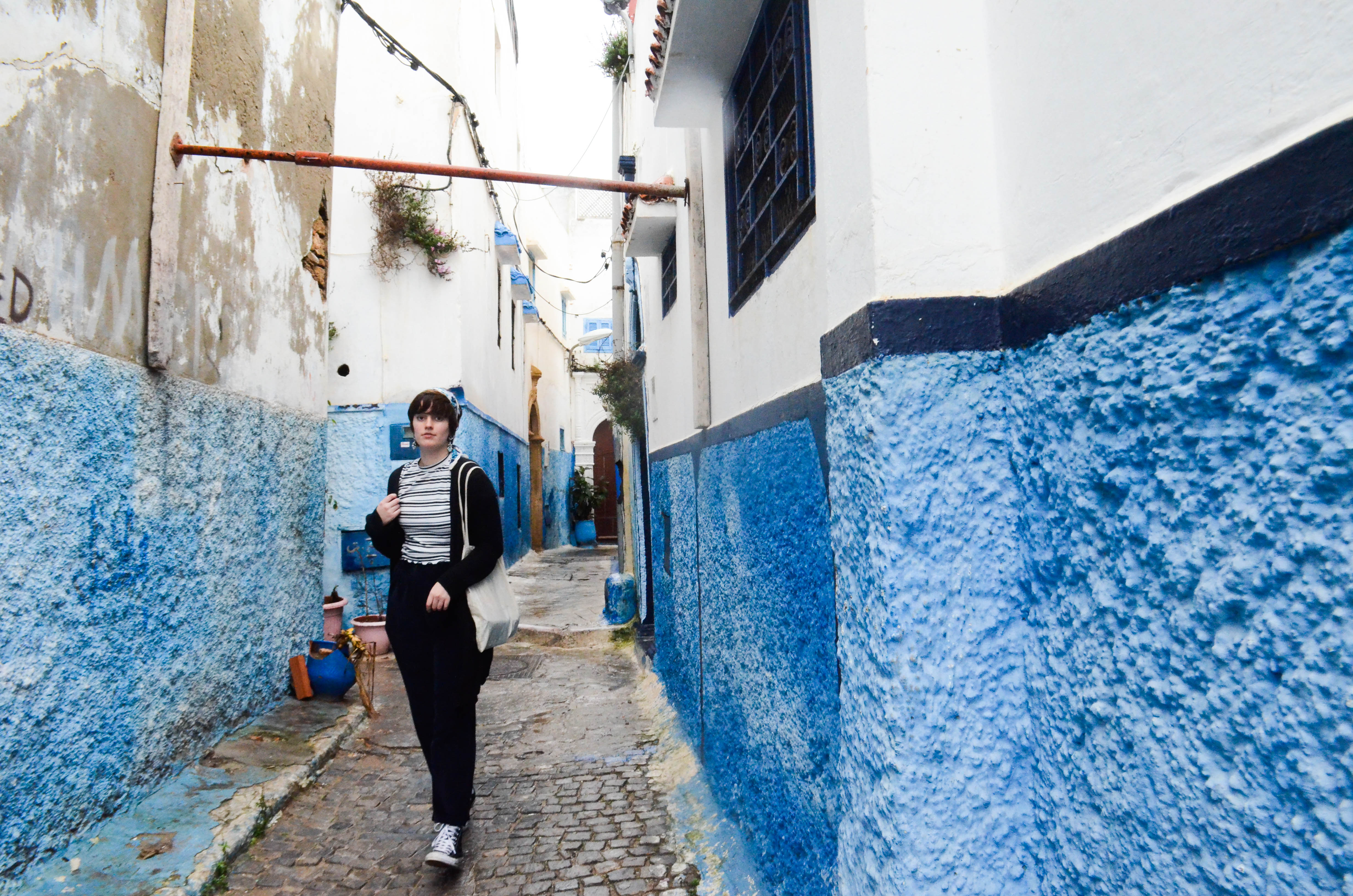
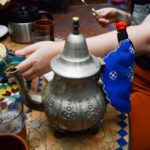
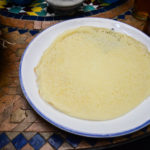
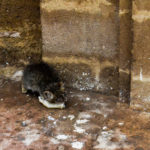
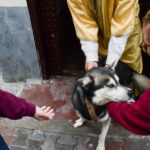
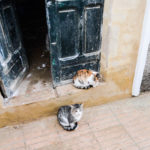
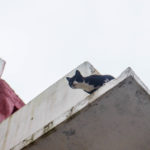
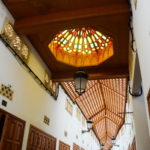
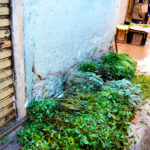
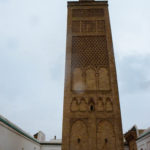
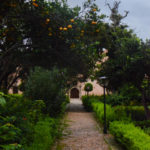
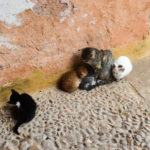
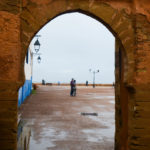
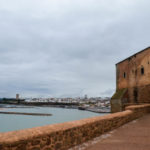
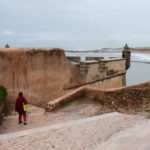
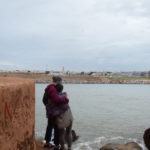
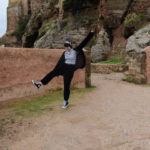
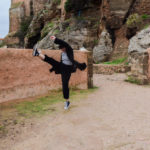
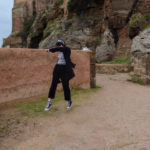
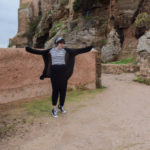
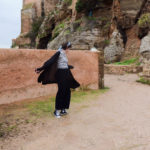
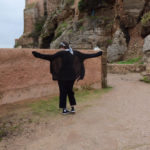
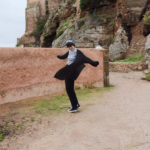
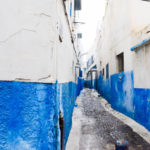
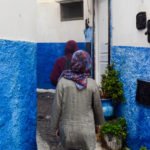
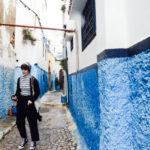
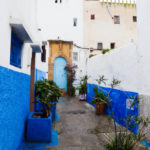
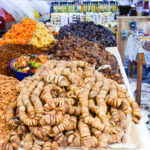
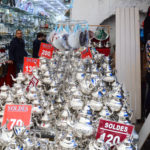
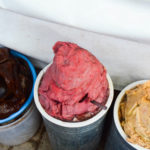
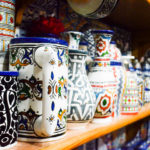
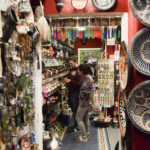
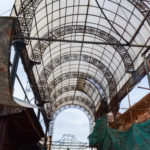
Wonderful report (both Highs and Lows) and terrific pics. Thanks for sharing your wonderful time in Spain, Morocco , et al. Stay safe!
Another fabulous blog, sharing your adventures in Morocco and surrounding areas. The highs seemed to outweigh the lows at least from this readers point of view. But I can just begin to imagine how frustrating the time change issue must have been. The riad looked so beautiful. I really liked the huge, red hibiscus growing in the courtyard. The graves looked to be above ground, just like in New Orleans, due to the sea levels. The goods in the market looked amazing, bright and fresh. Sorry about the cat-calling, that part was horrible I’m sure. Love you, see you soon, great getting to talk with you. Have fun on your next adventure!!